Bikes cause more childhood injuries than any other consumer product except cars.
- Always wear a helmet on every ride.
- Buy a bike that fits right. Check it often to make sure it’s safe.
- Make sure drivers can see you.
- Learn and follow the rules of the road.
More Info
Safe Kids Worldwide
202-662-0600
1301 Pennsylvania Avenue, NW
Suite 1000 Washington, DC 20004
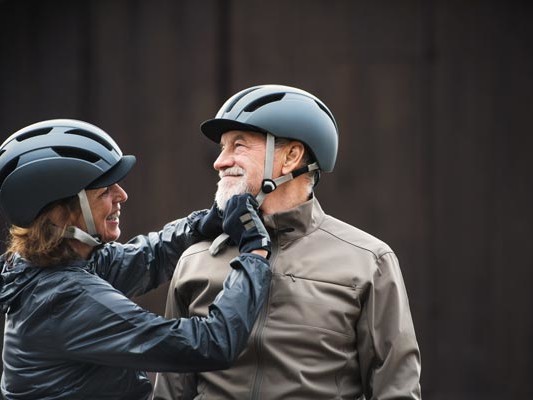
Wear a Helmet,
Every Ride
| ▢ | Get a helmet. Today, helmets cost less and are more comfortable. When worn, bicycle helmets cut the risk of severe brain damage by up to 88%. |
| ▢ | Children should always wear a helmet for all wheeled sports activities. |
-
- A bike helmet that fits well should be worn when roller skating, inline skating or riding a scooter.
- For skateboarding and longboarding, a skateboarding helmet is best.
Ways to Get Your Child to Wear a Helmet, Every Ride
| ▢ | Make it a habit from the first time your child rides a tricycle, bike or roller skates. Be sure he or she wears a helmet every time. |
| ▢ | Enforce the simple rule: “No helmet, No bike.” (or skateboard, or roller skates, or scooter.) |
| ▢ | Explain that riding on wheels can be fun but dangerous, too and wearing a helmet can keep him from badly hurting his head. |
| ▢ | Let your child pick out the helmet so he or she is more likely to wear it. |
| ▢ | Wear one yourself. Remember: a child is more likely to wear her helmet when you do too! |
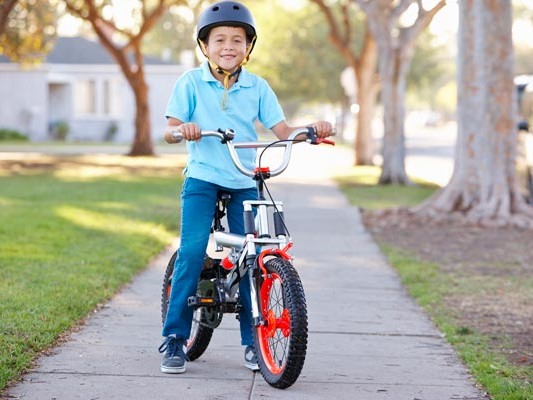
Before you Ride
| ▢ | Buy a bicycle that is the right size for your child — not one he or she will “grow into.” Bring him along to the bike shop for the right fit. |
| ▢ | Place reflectors on the front, back and sides of the bike, skates or scooter. |
| ▢ | Check often to be sure that: |
-
- reflectors are secure
- brakes work well
- gears shift smoothly
- tires are on tight and properly inflated.
| ▢ | Consider clothes with reflective materials to help drivers spot kids on wheels. |
| ▢ | Take the helmet fit test (see diagram): |
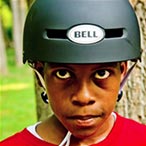
Eyes: Put the helmet on your head. Look up. You should see the bottom rim of the helmet.
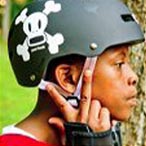
Ears: Make sure the straps form a ‘V’ under your ears when buckled. The straps should be a little tight but comfortable.
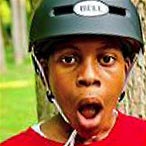
Mouth: Open your mouth as wide as you can. Does the helmet hug your head? If not, tighten the straps.
Reminders for Adults, Lessons to Teach Children
| ▢ | Always follow the safety rules and traffic laws. |
| ▢ | Ride right: Bikes travel with traffic, not against it. Ride on the righthand side of the road. |
-
- Bicycling on the street can be safe for older children, especially where there are bike lanes.
- Children who are 10 years or older, and mature and skilled enough to make safe decisions, should be taught how to ride in bike lanes.
| ▢ | Children should only ride or skate in good weather and during the day. They should stay on sidewalks and paths – not roads – until age 10. |
| ▢ | Use hand signals when turning. |
| ▢ | Before you cross a street: |
-
- use a crosswalk if you can
- stop and look: LEFT, RIGHT, and LEFT AGAIN
- if a car or truck is coming, wait until they are gone before you start to cross
| ▢ | Watch for uneven surfaces while riding or skating (potholes, cracks, rocks, railroad tracks, storm grates). |
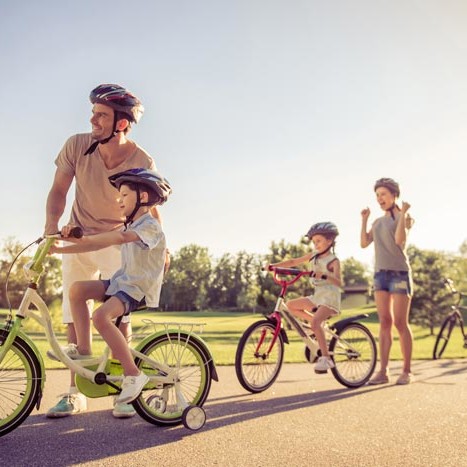
Bike Helmet Size Guide
How to Measure
Measure your head circumference by wrapping a flexible tape measure around the largest portion of your head—about one inch above your eyebrows.
The VRFA sells custom-fit bike helmets for a reduced cost for VRFA residents only. Inventory is limited. Please call ahead for our available sizes: 253-288-5800
| Size | Head Measurement (CM) |
|---|---|
| Toddler | 46-52 cm |
| Small | 52-57 cm |
| Medium | 54-58 cm |
| Large | 58-62 cm |
| Extra Large | 59-63 cm |